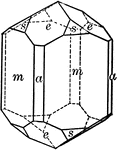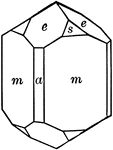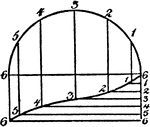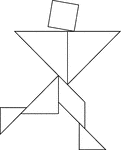
Runner
Tangrams, invented by the Chinese, are used to develop geometric thinking and spatial sense. Seven figures…
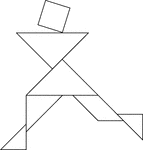
Runner
Tangrams, invented by the Chinese, are used to develop geometric thinking and spatial sense. Seven figures…
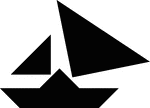
Sailboat
Tangrams, invented by the Chinese, are used to develop geometric thinking and spatial sense. Seven figures…
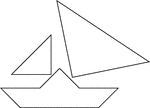
Sailboat
Tangrams, invented by the Chinese, are used to develop geometric thinking and spatial sense. Seven figures…

Sailboat
Tangrams, invented by the Chinese, are used to develop geometric thinking and spatial sense. Seven figures…
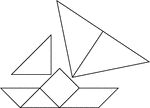
Sailboat
Tangrams, invented by the Chinese, are used to develop geometric thinking and spatial sense. Seven figures…

Saint
Tangrams, invented by the Chinese, are used to develop geometric thinking and spatial sense. Seven figures…

Saint
Tangrams, invented by the Chinese, are used to develop geometric thinking and spatial sense. Seven figures…

Saint
Tangrams, invented by the Chinese, are used to develop geometric thinking and spatial sense. Seven figures…

Saint
Tangrams, invented by the Chinese, are used to develop geometric thinking and spatial sense. Seven figures…

Satellite
"Nodal Cubic, with four primary lines and their satellite. In the diagram, ABC is the satellite line.…

Saw Blade
Tangrams, invented by the Chinese, are used to develop geometric thinking and spatial sense. Seven figures…

Saw Blade
Tangrams, invented by the Chinese, are used to develop geometric thinking and spatial sense. Seven figures…

Saw Blade
Tangrams, invented by the Chinese, are used to develop geometric thinking and spatial sense. Seven figures…

Saw Blade
Tangrams, invented by the Chinese, are used to develop geometric thinking and spatial sense. Seven figures…

Scalenohedron
"This form consists of twelve scalene triangular faces. These faces correspond in their position to…

Scapolite
"A crystal of scapolite, upon which the faces of the third-order pyramid are shown." — Ford, 1912
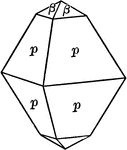
Scheelite
"Tetragonal; tri-pyramidal. Crystals usually simple pyramids of first order. Closely resemble isometric…
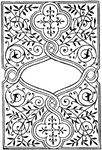
Grolier Scroll
"Grolier scroll, the flowing curved lines that surround and interlace the geometrical framework of a…

Sea Monster
Tangrams, invented by the Chinese, are used to develop geometric thinking and spatial sense. Seven figures…

Sea Monster
Tangrams, invented by the Chinese, are used to develop geometric thinking and spatial sense. Seven figures…

Sea Monster
Tangrams, invented by the Chinese, are used to develop geometric thinking and spatial sense. Seven figures…

Sea Monster
Tangrams, invented by the Chinese, are used to develop geometric thinking and spatial sense. Seven figures…
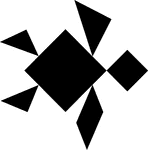
Sea Turtle
Tangrams, invented by the Chinese, are used to develop geometric thinking and spatial sense. Seven figures…
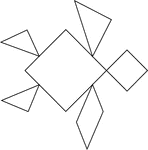
Sea Turtle
Tangrams, invented by the Chinese, are used to develop geometric thinking and spatial sense. Seven figures…
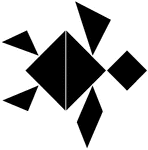
Sea Turtle
Tangrams, invented by the Chinese, are used to develop geometric thinking and spatial sense. Seven figures…
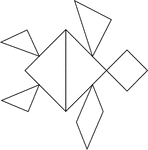
Sea Turtle
Tangrams, invented by the Chinese, are used to develop geometric thinking and spatial sense. Seven figures…

Seagull
Tangrams, invented by the Chinese, are used to develop geometric thinking and spatial sense. Seven figures…

Seagull
Tangrams, invented by the Chinese, are used to develop geometric thinking and spatial sense. Seven figures…

Seagull
Tangrams, invented by the Chinese, are used to develop geometric thinking and spatial sense. Seven figures…

Seagull
Tangrams, invented by the Chinese, are used to develop geometric thinking and spatial sense. Seven figures…

Circle with Secant
A secant is "a line which cuts a figure in any way. Specifically, in trigonometry, a line from the center…
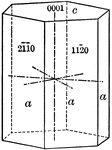
Prism of the second order
"This is a form consisting of six rectangular vertical faces, each of which intersects two of the horizontal…

Pyramid of the second order
"This is a form composed of twelve isoceles triangular faces, each of which intersects two of the horizontal…
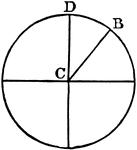
Sector
"In geometry: (a) A plane figure inclosed between the arc of a circle, ellipse, or other central curve…

Circle Sector
An illustration showing a circle sector with radius r, center/central angle v, and length of circle…

Circle Sector
An illustration showing a circle sector with center/central angle v and polygon angle w.
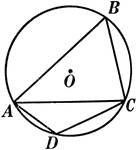
Right Angles Inscribed in Semicircle Proof
Illustration of a circle used to prove "Any angle inscribed in a semicircle is a right angle."

Shark
Tangrams, invented by the Chinese, are used to develop geometric thinking and spatial sense. Seven figures…

Shark
Tangrams, invented by the Chinese, are used to develop geometric thinking and spatial sense. Seven figures…

Shark
Tangrams, invented by the Chinese, are used to develop geometric thinking and spatial sense. Seven figures…

Shark
Tangrams, invented by the Chinese, are used to develop geometric thinking and spatial sense. Seven figures…
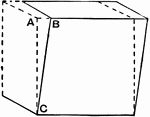
Shear
"Shear is a particular form of strain produced by causing plane layers of a material to slide parallel…
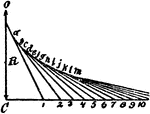
Construction Of Shield's Anti-friction Curve
An illustration showing how to construct Shield's anti-friction curve. "R represents the radius of the…
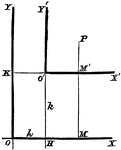
Axes Shift
Any system of coordinate axes to another set which is parallel to the former, but with different origins.

Ship
Tangrams, invented by the Chinese, are used to develop geometric thinking and spatial sense. Seven figures…

Ship
Tangrams, invented by the Chinese, are used to develop geometric thinking and spatial sense. Seven figures…

Ship
Tangrams, invented by the Chinese, are used to develop geometric thinking and spatial sense. Seven figures…

Ship
Tangrams, invented by the Chinese, are used to develop geometric thinking and spatial sense. Seven figures…

Line Bisecting Side of a Triangle
Illustration used to prove "The line bisecting one side of a triangle and parallel to another side bisects…
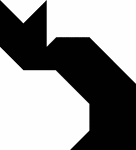
Sitting Cat
Tangrams, invented by the Chinese, are used to develop geometric thinking and spatial sense. Seven figures…
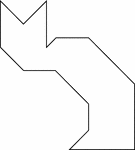
Sitting Cat
Tangrams, invented by the Chinese, are used to develop geometric thinking and spatial sense. Seven figures…
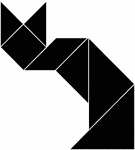
Sitting Cat
Tangrams, invented by the Chinese, are used to develop geometric thinking and spatial sense. Seven figures…
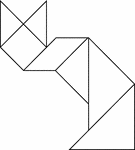
Sitting Cat
Tangrams, invented by the Chinese, are used to develop geometric thinking and spatial sense. Seven figures…
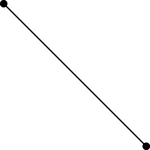
Segment, Slanted Line
Illustration of a slanted line segment. A line segment is a section of a line with definite endpoints.
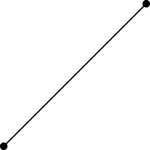
Segment, Slanted Line
Illustration of a slanted line segment. A line segment is a section of a line with definite endpoints.
